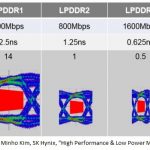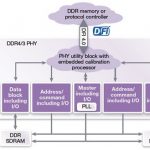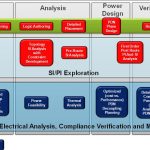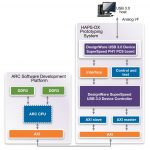The emergence of chiplets as a technology is an inflection point in the semiconductor industry. The potential benefits of adopting a chiplets-based approach to implementing electronic systems are not a debate. Chiplets, which are smaller, pre-manufactured components can be combined to create larger systems, offering benefits… Read More
Tag: jedec
LIVE Webinar: Bridging Analog and Digital worlds at high speed with the JESD204 serial interface
To meet the increased demand for converter speed and resolution, JEDEC proposed the JESD204 standard describing a new efficient serial interface to handle data converters. In 2006, the JESD204 standard offered support for multiple data converters over a single lane with the following standard revisions; A, B, and C successively… Read More
Trust, but verify. How to catch peanut butter engineering before it spreads into your system — Part 1: Validation.
I will address this topic with two blog posts: validation (i.e. post silicon) — Part 1, and verification (pre-silicon) — Part 2 (coming soon!). In this blog post, I will focus on validation.
One of the upsides of using catalog chips that have been in the market for a long time and have ramped in substantial volumes is that… Read More
Semiconductor Reliability and Product Qualification
This week, we are continuing our discussion of various topics that Semitracks addresses in their training activities. One area that they focus on quite a bit is Semiconductor Reliability and Product Qualification.
One of the key activities that a Product Engineer will coordinate is the qualification of new products before they… Read More
How HBM Will Change SOC Design
High Bandwidth Memory (HBM) promises to do for electronic product design what high-rise buildings did for cities. Up until now, electronic circuits have suffered from the equivalent of suburban sprawl. HBM is a radical transformation of memory architecture that will have huge ripple effects on how SOC based electronics are … Read More
Start Your HBM 2.5D Design Today!
Next week there is a live seminar at the famed Computer Museum in Silicon Valley that you won’t want to miss. If you haven’t been to the Computer Museum here is what you are missing:… Read More
DDR4 is a complex interface to verify — assistance needed!
The design of parallel interfaces is supposed to be (comparatively) easy — e.g., follow a few printed circuit board routing guidelines; pay attention to data/clock/strobe signal lengths and shielding; ensure good current return paths (avoid discontinuities); match the terminating resistances to the PCB trace impedance;… Read More
Advances in DDR IP Solution for High-Performance SoCs
In this era of high-performance, low-power, and low-cost devices coming up at an unprecedented scale, the SoCs can never attain the ultimate in performance; always there is scope for improvement. Several methods including innovative technology, multi-processor architecture, memory, data traffic management for low latency,… Read More
Sigrity Focuses on LPDDR4 Compliance Analysis in 2015 Release
It was back in July of 2012 that the acquisition of Sigrity by Cadence was announced. Although Cadence is a dominant player in both IC and board layout tools, they did not have an electromagnetic (EM) signal integrity solution in their portfolio. This acquisition marks a turning point for the EM/SI sector – tight integration… Read More
Prototyping Kits to Accelerate IP Development & Integration into SoCs
With growing SoC size, complexity, software and hardware content in it and shrinking time-to-market, the SoC design completion in time has become increasingly dependent on IP which need to be sourced (internally or externally), customized according to the design need and integrated together into the SoC. While IP providers… Read More








